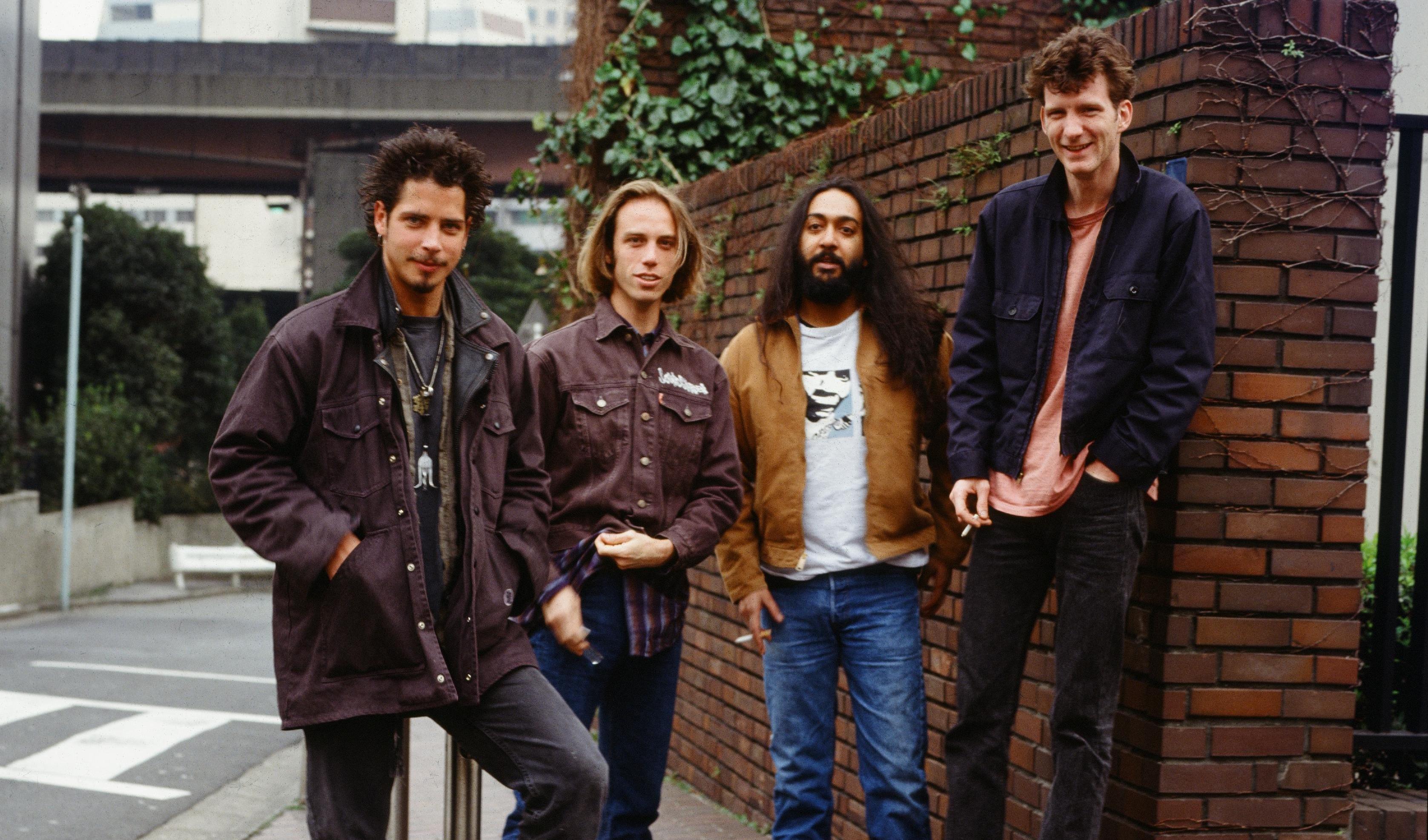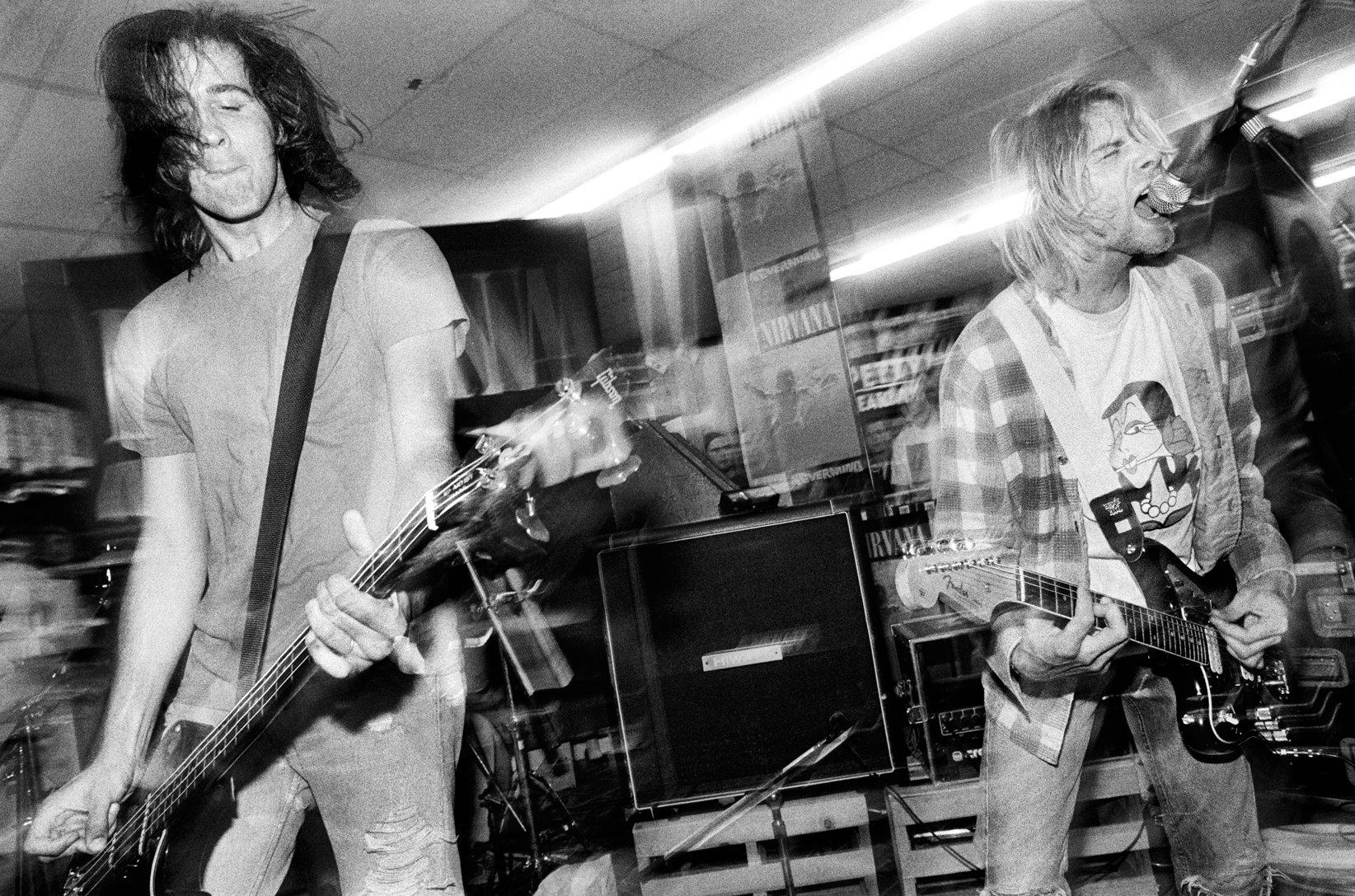For some, it may be hard to believe that it's been 20 years since Nirvana's third album, In Utero, was released. The multi-platinum follow-up to their highly successful major label debut, 1991's Nevermind, In Utero showcased a rawer side to the grunge catalysts that was encouraged by their producer, Steve Albini. Recorded and mixed over a two-week period, the album spawned the hits "Heart-Shaped Box" and "All Apologies," along with the controversial "Rape Me," and garnered two GRAMMY nominations, including Best Alternative Music Album. The album marked Nirvana's final studio release as less than eight months later frontman Kurt Cobain committed suicide.
To commemorate In Utero's 20th anniversary, on Sept. 24 former band members — drummer Dave Grohl and bassist Krist Novoselic — and Albini will issue a remastered version of the original album. The deluxe box set edition contains more than 70 remastered, previously unreleased recordings, including B-sides, compilation tracks, never-before-heard demos, and live material, as well as a newly remixed version of the album, which pushes previously unheard elements to the fore. In addition, on Sept. 24 the band will release Live And Loud, a DVD featuring their full concert performed for an MTV broadcast in Seattle on Dec. 13, 1993.
In an exclusive interview with GRAMMY.com, Albini discussed revisiting In Utero for its deluxe anniversary edition and his experience working with Cobain.
It's rare to revisit an album that you worked on ages ago and really dissect it and pull new things out.
When I was first approached about doing the 2013 remix album, I didn't really grasp the concept for it. Then when Krist explained what his thoughts on it were, it was basically inspired by him having heard some new versions of records that he was very familiar with and being very excited to hear things he had never heard before. That was the jumping-off point for the remix process, which was to try to find opportunities to present things that people hadn't heard in the original version of the album and/or a different emphasis. I don't think he or I, or anyone else, would say that this version supplants the original version, but it's a companion piece that allows you to hear things from a different perspective. Taken in that light, I think it's a totally worthwhile enterprise. I think the remastered version of the original album sounds as good as I know how to make a record sound.
How often do you go back and listen to projects that you've worked on over the years?
It's not that frequent. Most of what you're working on is the person in the room with you at the moment, and that's [usually] because you have bills to pay. At the time, it was nice to be in the company of Dave, Krist and Pat [Smear] again and to be reminded of what cool people they are, how good the band was and how well they did in the original incarnation of the album. Every time we would play the original mixes of the album for reference, both Krist and I were struck by how great a job they had done the first time around.
When you worked on In Utero, Nirvana were still experiencing the effects of releasing Nevermind, an album that was a major game changer. It seems you were a good fit to produce their next album.
I think I identified with the band primarily because we are both from the same underground, punk rock-inspired music scene. I identified with them [and] they identified with me. We knew all the same people, we played in all the same venues, we'd slept on the same floors and had a lot of common experiences. I don't think it was a philosophical choice so much as it was one where they figured that I would get where they were coming from because I was from there too.
This album was created in 12 to 14 days. You like to have people work quickly, don't you?
Most of the records I work on don't have the budget to spend that kind of time in the studio. At the pace that they were working though, that was very comfortable. They recorded a lot of material. I think it ended up being 19 or so titles, including stuff that never ultimately made it to release.
Given that new technology has changed the landscape for music listening, what challenges did you face in remixing and remastering the album and trying to make it accessible to people listening to music through other means, such as handheld devices?
I don't give a s*** about that stuff. For every era there has been a music business truism that you should try to make things sound good at home. All of that is bulls***. Every scrap of compensating for the home listening environment is bulls***. A good record will sound good [and] a bad record will sound bad, regardless of what you're listening to it on. And because there is no standard version of home listening, whether it's a kitchen radio, TV speakers or an iPhone speaker, there's absolutely no way to compensate for something being played on a bad system by being in the studio and adding some compensatory badness. So the thing to do is to make the record sound as good as possible when you're listening to it on very good, accurate speakers in the studio.
Are there any versions of the remastered or remixed songs that you really like now?
The thing that I was really charmed most by in the whole process was just hearing how good a job the band had done the first time around. What struck me the most about the [remastering and reissue] process was the fact that everybody was willing to go the full nine yards for quality. That says how much this record means to all the people involved.
Over the years, a lot has been written about the "tortured artist" persona of Kurt Cobain. What was it like working with him?
I'll be honest, I didn't press him for any intimacy. At the time, I knew that there were dozens of people who wanted to latch onto him in a way, and I didn't want him to feel him like I was one of those people. Basically, I wanted him to know our relationship was that I worked for him and that I would be there to help him make his record. I never really got inside his inner circle. He didn't bare his heart to me in any way. I respected him and came to appreciate him as a songwriter and as a thinker. I think he's an underrated guitar player. Through the process of working on the record, I came to develop a more rounded impression of him, but I still considered him a peer.
(Bryan Reesman is a New York-based freelance writer.)




